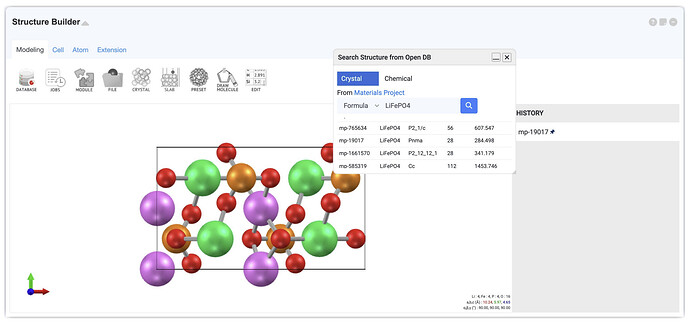We’re excited to share the first hands-on tutorial from our new educational simulation series focused on battery materials! Starting this week, We’ll post a new simulation every week using Materials Square (matsq.com), a web-based platform for atomistic modeling. This series is designed for researchers, students, and anyone curious about materials simulations. Please feel free to contact us or leave your comments.
Lab.1 Topic: Cohesive Energy Calculation
Cohesive energy is a fundamental property that measures the energy difference between atoms in a bonded crystal structure and the same atoms in isolated, free states. It serves as a key indicator of material stability and mechanical behavior.
In this lab, we walk through:
![]() Building and relaxing the unit cell of a material
Building and relaxing the unit cell of a material
![]() Calculating the energy of free (isolated) atoms
Calculating the energy of free (isolated) atoms
![]() Computing the cohesive energy using the formula
Computing the cohesive energy using the formula
![]() Interpreting results to compare material stability
Interpreting results to compare material stability
![]() Learning Objectives
Learning Objectives
Get hands-on experience with DFT (Density Functional Theory) calculations
Calculate the cohesive energy of selected materials (e.g., Li, C, Si)
Lay the groundwork for more advanced topics such as diffusion, adsorption, and electrolyte interactions covered in future labs
![]() Tool Used: Materials Square
Tool Used: Materials Square
This tutorial is conducted on Materials Square, a user-friendly platform that makes it easy to run DFT simulations via a browser interface. Even if you’re new to simulations, you’ll be able to follow along with minimal friction.
Next week: [Lab.2] Li Diffusion Activation Barrier in Bulk Structures ![]()
We’ll walk through NEB (nudged elastic band) calculations for lithium diffusion paths.
![]() Download Material Here : Battery_materials
Download Material Here : Battery_materials
![]() Drop a comment or contact us if you’d like the input files or step-by-step guide!
Drop a comment or contact us if you’d like the input files or step-by-step guide!
